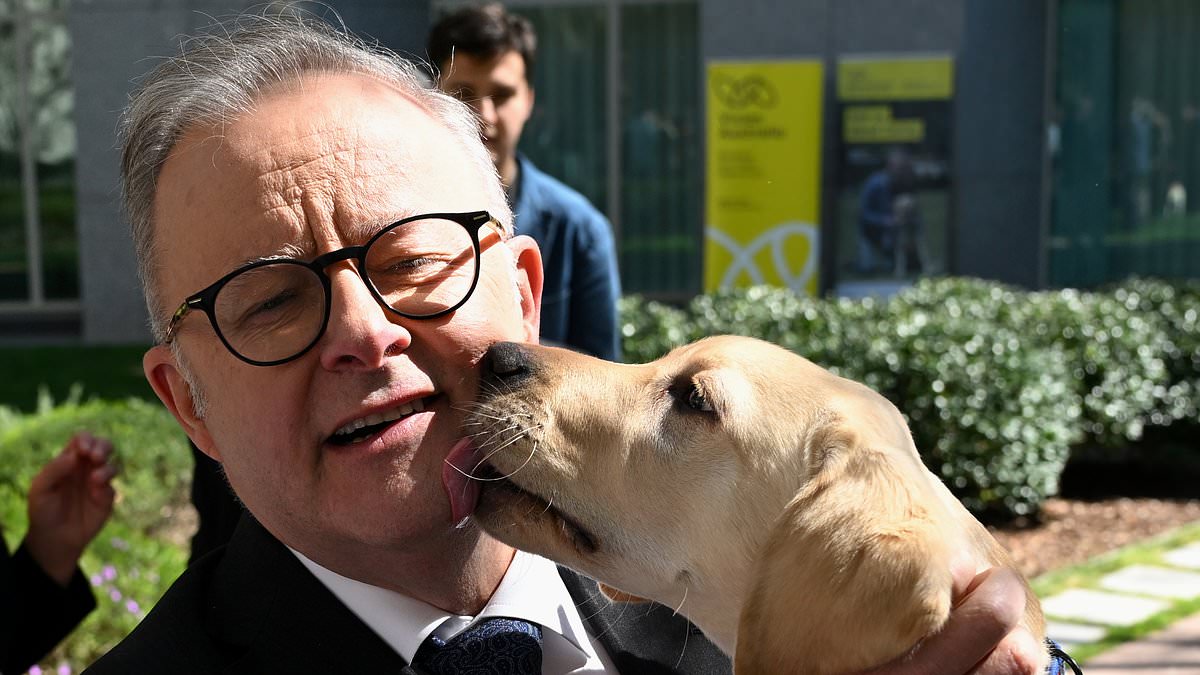Anthony Albanese’s promise to slash immigration in half is looking shallow with the big overseas influx continuing.
In the year to July, 432,150 migrants on a net basis moved to .
This was despite the May Budget forecasting a fall in net overseas migration to 260,000 by the end of this financial year, 2024-25, compared with 528,000 in 2022-23.
Institute of Public Affairs deputy executive director Daniel Wild said the latest n Bureau of Statistics data exposed how immigration was still growing at unsustainably high levels.
‘The federal government has repeatedly promised to cut migration levels yet, month after month, migration intake records continue to be exceeded,’ he said.
‘It is clear the Prime Minister has no intention to rein in the unsustainable migration intake.’
The influx of international students in particular has created a rental crisis in cities, with tenants braving long queues and suffering from housing stress.
International students make up a big share of ‘s permanent and long-term intake. Education Minister Jason Clare last month announced a 270,000 cap on foreigners coming here to study in 2025.
He argued this cap was a key to reducing overall immigration, as promised in the Budget.
‘What it does, in first instance, is help us to meet that net overseas migration number,’ he said on Wednesday.
‘Our universities don’t run the migration system in , a government should.’
‘s permanent intake, covering skilled migrants, is being capped at 185,000 in 2024-25 which means the government will only achieve its goal of reducing overall immigration levels if there is a big exodus of international students once they graduate.
Record-high immigration levels have failed to arrest ‘s falling productivity levels.
has also been in a per capita recession since the March quarter of 2023 where economic output for every n has been flat or shrinking.
The massive population increase has failed to significantly boost economic activity in the face of the Reserve Bank’s 13 interest rate rises in 2022 and 2023.
‘s economy grew by just 1 per cent in 2023-24, marking the slowest annual growth since 1991 outside of a pandemic, as population pressures added to the cost-of-living crisis.
”s out-of-control migration intake is unsustainable and making ns poorer,’ Mr Wild said.
The rapid population increase has also been linked to the rental crisis in the capital cities, which have an ultra-tight vacancy rate of 1.3 per cent.
‘ns have had a gutful of being treated like mugs by the federal government when it comes to its never-ending, unplanned mass migration program,’ Mr Wild said.
‘This policy failure is causing immense economic and social pressure amid a housing and cost-of-living crisis.’
In the year to July, 165,443 new homes were approved.
This was well short of Labor’s 240,000 annual target as part of its plan to build 1.2million homes over the five years to June 2029.
With 2.5 people on average per household, the latest building approvals tally meant would still have a shortage of 18,542 homes to cater for the new migrants, once those houses and units were built.
The ABS won’t have updated building activity data on completed homes, for the June quarter, until October 9.
But in the year to March, 171,667 homes were completed.
Building approval numbers are much lower than they were in 2022, and soaring construction costs have seen a long list of construction companies go bust; making up a quarter of all insolvencies.
Reserve Bank Governor Michele Bullock has also ruled out any rate cut in 2024 with the headline inflation rate of 3.8 per cent still well above the RBA’s 2 to 3 per cent target.
‘The out-of-control migration intake is one of the largest social and economic failures in ‘s history,’ Mr Wild said.
‘It is totally unplanned for, and has fuelled a perfect storm of high inflation, declining household incomes, and record and rising house prices and rents.’
The evidence linking high immigration with the property market is mixed.
Simon Pressley, the managing director of buyer’s agency group Propertyology, said local economic performance was a bigger driver of house prices than overseas migration.
‘Most overseas migrants don’t buy a property within the first seven years of moving here – they rent,’ he told Daily Mail .
‘So, when someone rents that doesn’t affect the value of the asset, it affects the price that they are paying for rent.
‘The existing resident population: they are the ones who have the biggest influence on housing demand because people don’t stay put all the time.’
Sydney’s median house price rose by 5.7 per cent in the year to August to $1.471million, CoreLogic data showed.
But Melbourne, another city with a high overseas migration intake, saw its mid-point house price fall by 1.1 per cent to $929,715 after Victoria’s Labor government introduced a flat $975 annual investor tax.
The cities with the biggest house price surges are getting a bigger influx of interstate migration, with Brisbane’s median house price rising by 14.1 per cent over the year to $966,382 as Perth values soared 24.3 per cent to $818,839.
Daily Mail contacted Mr Albanese’s office for comment.
